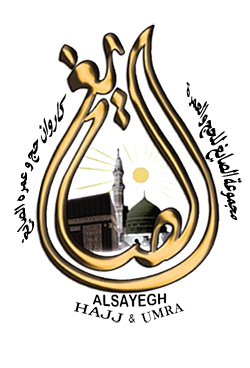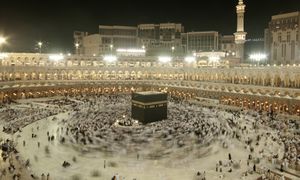Ritual lessons
Al-ʿUmra al-Mufrada
Al-‘Umrat al-mufrada consists of seven acts that must be performed in this sequence:
- Ihram: For Ihram, those who are in Meccamust go to “adna al-hill” (the nearest place out of Haram area) and those who are out of Mecca must go to one of the five Miqats.[1]
- Tawaf.
- Salat al-tawaf(2 rak’as)
- Sa’y
- Taqsiror Halq: in al-‘umrat al-mufrada, pilgrim is allowed to choose halq (shaving the head) or taqsir (cutting some hear or nails), unlike ‘umrat al-tamatu’ in which halq is not permissible.
- Tawaf al-Nisa.
- Salat of Tawaf al-Nisa’ (2 rak’as)[2]
Iḥrām (Arabic: إحرام) is the first action of the rites of hajj of ‘umra. Ihram starts from miqat. The ihram outfit for men is two plain pieces of cloth: one is worn around the waist (izar) and the other over the shoulders (rida’). Ihram is one of the elemental parts (rukns) of hajj and after entering the state of ihram some acts that are permissible in normal conditions become temporarily prohibited for the one who has become muhrim and there are specific atonement (kaffara) for committing some of them.
Ṭawāf (Arabic: الطواف) consists in seven turns of circumambulation around the Ka’ba, which is one of the obligatory rituals of hajj and ‘umra. Each turn of this circumambulation is called a “shawt”. All kinds of hajj and ‘umra have two tawafs: tawaf al-ziyarah (tawaf of pilgrimage) and tawaf al–nisa‘ (tawaf of women), except ‘umrat al-tamattu‘ that does not involve tawaf al-nisa’. When one does not wear ihram, they can also practice recommended tawafs. After each tawaf, two rak’as of prayers should be performed behind Maqam Ibrahim (a).
There is no tawaf al-nisa’ in Sunni jurisprudence.
Ṣalāt al-Ṭawāf (Arabic: صلاة الطواف, tawaf prayer) is an obligatory action in hajj and ‘umra. This prayer has two rak’as just like the morning prayer, and it should be said after the tawaf behind Maqam Ibrahim. The difference between the tawaf prayer and prayer of tawaf al-nisa’ is merely in the intention.
Saʿy al-Ṣafā’ wa l-Marwa (Arabic: سعی الصفا والمروة) is an obligatory action in hajj and ‘umra consisting of 7 times of walking between the two mountains, al-Safa and al-Marwa.
Al-Ḥalq (Arabic: الحلق, shaving the head) and al-Taqṣīr (Arabic: التقصير, cutting hair or nails) are compulsory acts done in hajj or umra. In different cases one of them becomes compulsory. Like other acts in hajj and umra, halq and taqsir are acts of worship and hence need to be done by the intention of proximity to God.
Ṭawāf al-Nisāʾ (Arabic:طواف النساء) is one of the compulsory rituals of hajj and ‘umra. Before performing tawaf al-nisa’ all sexual activities is haram. Tawaf al-nisa’ is only found in Shi’a fiqh and there is no such ritual in Sunni fiqh.
Salat of Tawaf al-Nisa’ (2 rak’as)[2]

 العربية
العربية فارسی
فارسی
